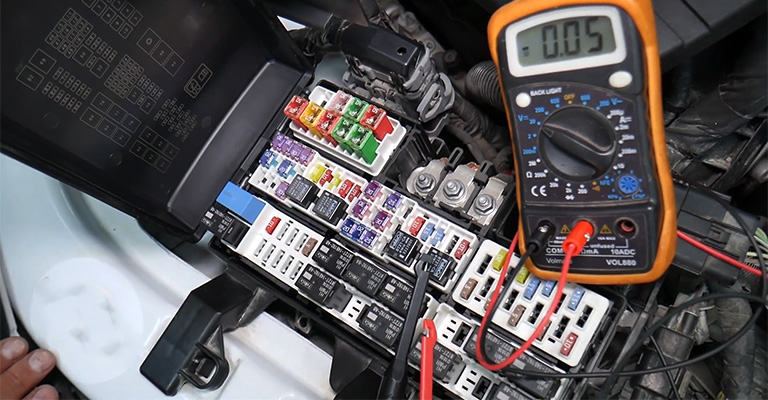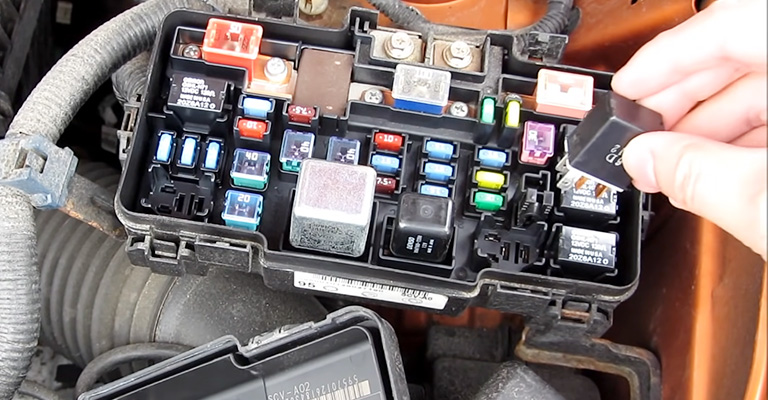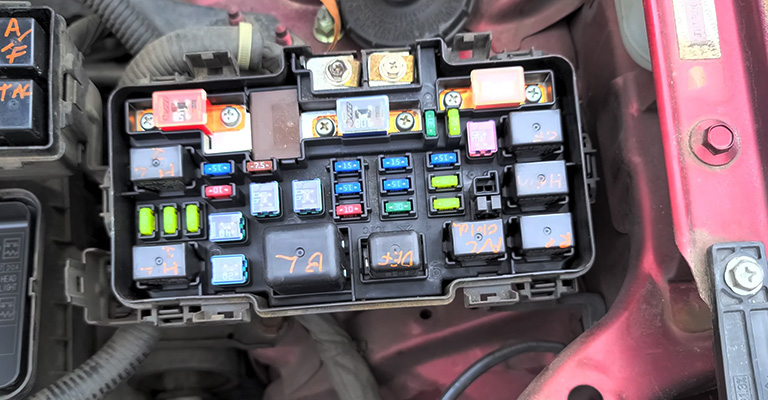In the context of a Honda vehicle, a HAC fuse, also known as Heating, Air-conditioning, and refrigeration fuse, is specifically designed to protect the electrical system of the heating, air conditioning, and refrigeration components.
These fuses are designed to handle the inductive loads of motors that are commonly found in HVAC systems, as well as the repetitive inrush current that occurs during equipment start-up.
The purpose of a HAC fuse is to ensure that the electrical system of these components is protected and to prevent damage to the vehicle.

How to Replace a HAC Fuse in a Honda
Replacing a HAC fuse in a Honda vehicle is a relatively simple process, but it is important to take safety precautions and to use the correct fuse for the specific system.
Step-by-Step instructions for replacing a HAC fuse
- Locate the fuse box in your Honda vehicle. This is typically located under the dashboard or in the engine compartment.
- Consult the owner’s manual or the fuse box diagram to identify the correct fuse for the system that needs to be serviced.
- Turn off the vehicle and ensure that the keys are removed from the ignition.
- Use the fuse puller or a pair of needle-nose pliers to remove the blown fuse from the fuse box.
- Inspect the fuse to ensure that it has indeed blown, if not, consult the vehicle manual to diagnose the problem.
- Replace the fuse with a new one of the same amperage rating.
- Turn the vehicle on and check that the system is functioning properly.

Safety precautions
- Always ensure that the vehicle is turned off and the keys are removed from the ignition before working on the electrical system.
- Be aware of any sharp edges or hot surfaces when working on the fuse box.
- Use caution when handling fuses, as they can be fragile and can break easily.
To identify the correct HAC fuse for a specific Honda system, consult the owner’s manual or the fuse box diagram.
The manual will indicate the location of the fuse box, and the fuse box diagram will indicate the amperage rating and location of each fuse.
It is important to use the correct fuse for each specific system to ensure that the electrical system is properly protected and to prevent damage to the vehicle.
Other Types of Fuse Used by Honda

Honda, like other vehicle manufacturers, uses a variety of different types of fuses to protect the various electrical systems in their vehicles. Some of the other options used in Honda vehicles instead of HAC fuses include:
- Mini fuses: These are small, blade-style fuses that are commonly used in Honda vehicles to protect smaller electrical systems such as the radio or the power windows.
- Maxi fuses: These are larger, cylinder-shaped fuses that are used in Honda vehicles to protect larger electrical systems such as the engine or the alternator.
- Micro2 fuses: These are a type of mini-fuse with a smaller size and lower amperage rating, used in more recent Honda models.
- Jcase fuses: These are a type of mini-fuse that are typically used in Honda vehicles to protect electrical systems that require a higher amperage rating.
- APS/ATC fuses: These are a type of blade fuse used in older Honda models, typically for the protection of smaller electrical systems such as radio, lights, and other accessories.
- AGC fuses: These are a type of glass tube fuse used in older Honda models, typically for the protection of larger electrical systems such as the engine or the alternator.
It is important to note that different Honda models may use different types of fuses, and the type of fuse used will depend on the specific electrical system that needs to be protected. It’s important to refer to the vehicle’s owner manual or contact the Honda customer service for more information on what type of fuses are used in a specific Honda model.

Leave a Reply